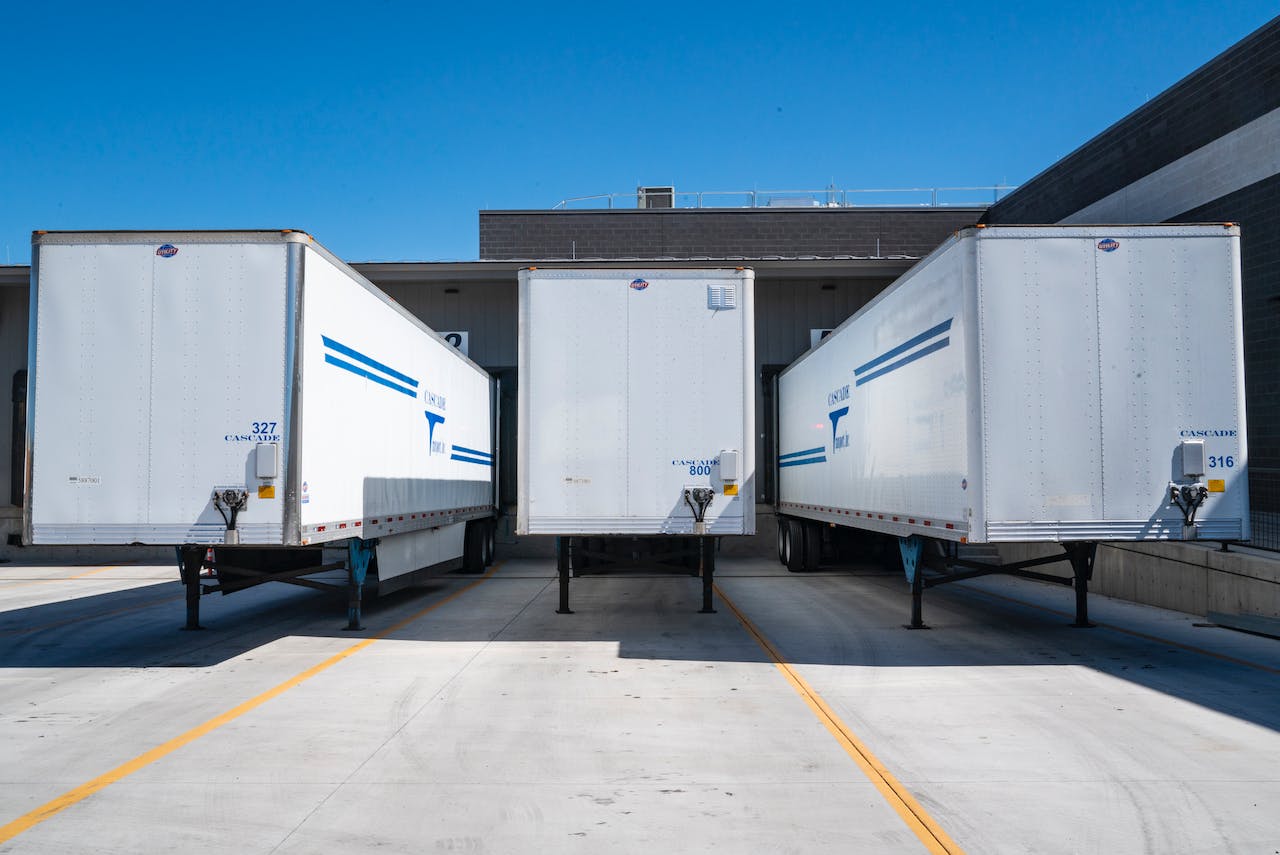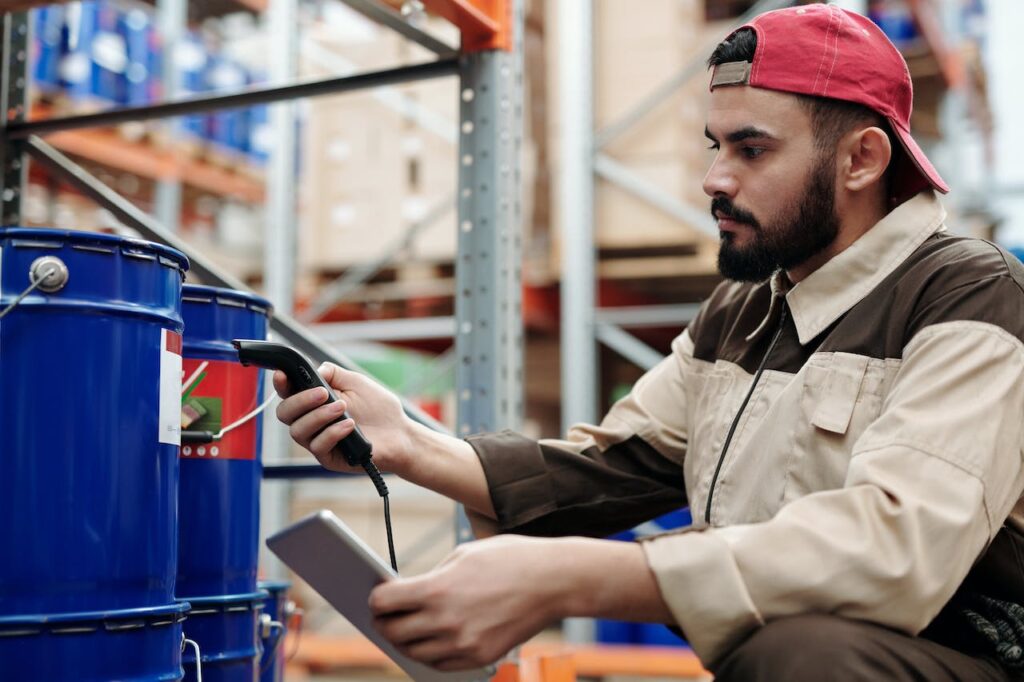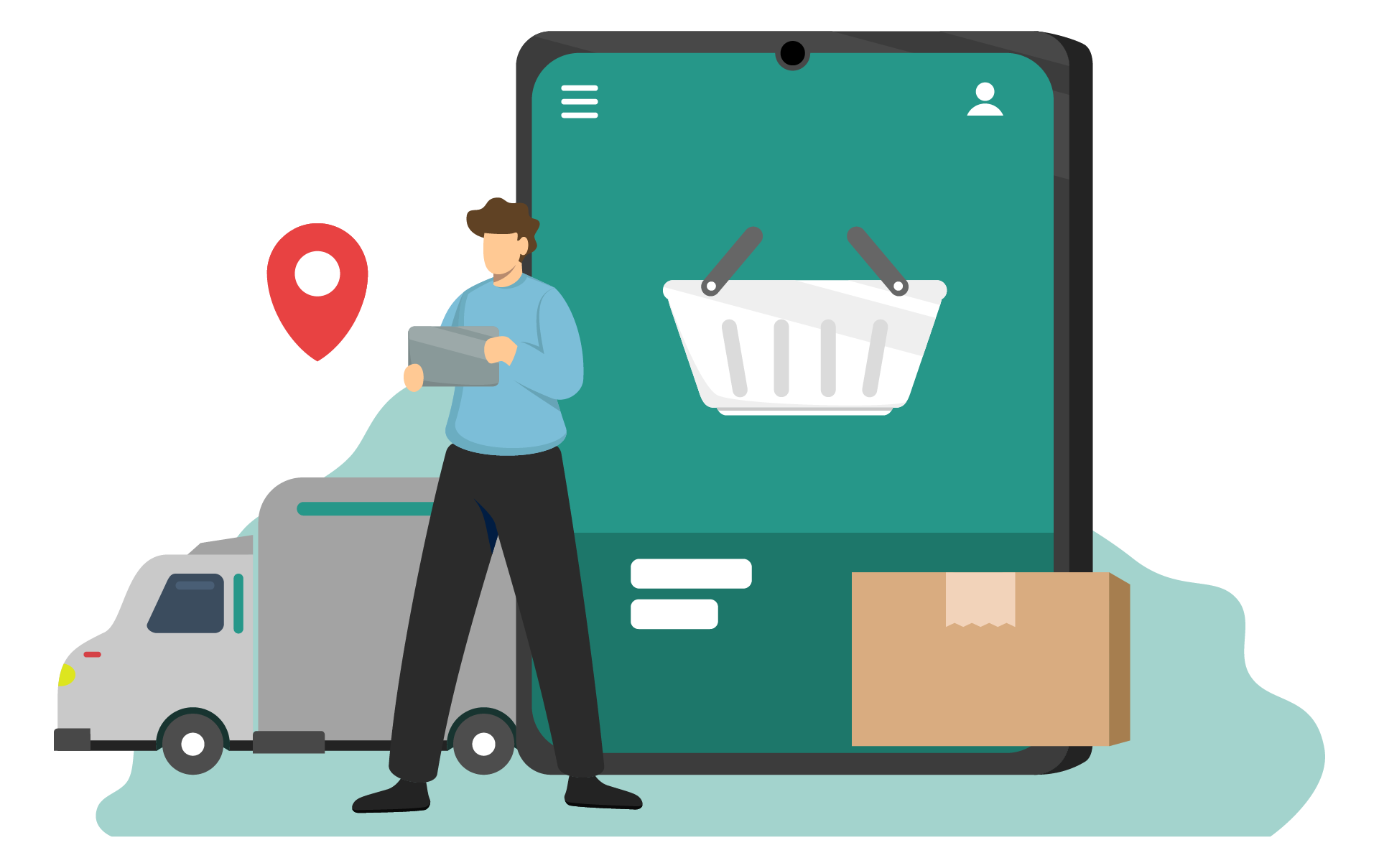You might have heard about the Internet of Things or IoT at some point. It sounds like something from a sci-fi movie, but it’s a reality changing how things operate. We see this in every aspect of our business operations: finance, marketing, client management, and logistics.
In this article, we look at how the Internet of Things is changing logistics for the better. So let’s dive in and learn more about IoT’s positive implications on logistics.

What is IoT in Logistics?
The Internet of Things (IoT) is revolutionizing the logistics industry by enhancing efficiency.
For the most part, it’s been a massive force in improving supply chain management and increasing overall customer satisfaction. It’s no wonder why companies spent over $1.1 trillion on IoT improvements in 2023.
But what is IoT, and how does it affect logistics? This refers to the network of physical objects embedded with sensors, software, and other technologies to connect and exchange data with other devices and systems over the Internet.
In logistics, the applications and implications are endless. Let’s look at some of the most important ones.
How IoT can Impact Logistics
In logistics, IoT translates to several impactful changes. Here are some ways that the Internet of Things is changing logistics forever.
- Improved Management. IoT devices help you manage day-to-day operational tasks remotely and on-site. Automation can track inventory levels and provide precise data, reducing overstocking, stockouts, and human error. Better accuracy in your logistics management leads to more efficient warehouse operations and better fulfilment rates.
- Enhanced Customer Experience. The data collected through IoT devices can provide your clients and customers with more accurate delivery times and real-time tracking information. In a time when time and transparency are highly important, IoT applications can contribute greatly to a more satisfying customer experience.
- Cost Reduction and Efficiency. IoT can significantly reduce operational costs by optimizing routes, reducing fuel consumption, and improving vehicle maintenance. Moreover, the automation mentioned earlier reduces the need for manual intervention, which lowers manpower costs.
- Sustainability. IoT can contribute to greener logistics by optimizing routes to reduce fuel consumption and emissions. It can also help monitor the environmental conditions of goods, ensuring that sustainability standards are met during transportation.
- Data Analysis for Strategic Planning. The vast amount of data IoT devices generate becomes a gold mine of information and insights. Your company can analyse this data to identify patterns, predict trends, and make more informed business decisions. Using data in business psychology and strategic planning is vital to staying competitive in a rapidly evolving industry.
Applications of IoT in Logistics
The multifaceted logistics applications of IoT profoundly impact various aspects of operations. Some might include delivery tracking, route planning, inventory management, etc. Here’s a look at some of the most impactful applications of IoT in logistics.
Order and Delivery Tracking
IoT plays a big role in real-time order and delivery tracking today. Some systems embed sensors, barcodes, and RFID tags in packages so logistics companies can monitor the location and condition of goods in transit.
This technology provides customers and businesses with up-to-date information on the whereabouts of their shipments.
Additionally, it aids in ensuring the integrity of goods, which is particularly important for sensitive products.
Nowadays, 96% of customers track their orders online, hence, this application appeases your customers’ desire for transparency and trust.
Route Planning and Optimization
IoT devices with GPS technology enable dynamic route planning. With this capability, logistics companies can now determine the most efficient routes for their fleets.
Creating these optimizations in your logistics workflow reduces fuel consumption, lowers operational costs, and faster delivery times.
Furthermore, IoT can facilitate real-time route adjustments to avoid delays due to traffic congestion or unforeseen events, ensuring timely deliveries.
Inventory Management
IoT enhances inventory management through automated tracking and monitoring of stock levels. Sensors in warehouses can provide real-time inventory data, helping prevent stockouts or overstock situations. This efficiency in inventory management ensures that supply chains operate smoothly, reducing the need for excessive safety stock and minimizing warehousing costs.
Vehicle Maintenance and Management
IoT devices can monitor the health of transportation vehicles, providing predictive maintenance alerts. Detecting potential mechanical issues before they become major problems helps avoid unexpected breakdowns and costly repairs. This proactive approach to maintenance ensures that vehicles stay in optimal condition, reduce downtime, and extend their lifespan.
Security and Theft Prevention
IoT can significantly improve the security of goods in transit. Sensors and smart locks can alert authorities to unauthorized access or tampering, reducing the risk of theft and ensuring the safety of high-value shipments.
Use Cases of IoT in Logistics
The Internet of Things (IoT) has broad applications across various sectors, particularly logistics for eCommerce, retail, food and beverage, and healthcare.
Each sector leverages IoT to enhance efficiency, improve customer experience, and manage resources effectively. Let’s look at some ways you can apply IoT to these sectors.

eCommerce Logistics
- Real-Time Package Tracking: IoT provides customers with real-time updates on the location and status of their orders. This level of transparency is crucial for customer satisfaction in the eCommerce industry.
- Automated Warehousing: We now have smart warehouses equipped with IoT sensors and automated systems that streamline product sorting, storing, and retrieving.
- Predictive Inventory Management: eCommerce companies and brands can use IoT devices to forecast demand based on historical data and current trends. This will help businesses maintain optimal inventory levels and reduce stockouts or overstocking.
Retail Logistics
- Smart Shelves and Inventory Management: In retail logistics, IoT-enabled smart shelves automatically track inventory levels, alerting managers when items are low and need restocking, thereby reducing the chances of lost sales due to out-of-stock items.
- Supply Chain Optimization: Retail companies use IoT to track goods throughout the supply chain. They monitor all movement from warehouses to retail outlets to ensure timely and efficient restocking of products.
- Enhanced Customer Experience: Retailers use IoT data to understand shopping patterns and preferences, enabling personalized marketing and improving customer engagement.
Food and Beverage Logistics
- Cold Chain Monitoring: IoT sensors monitor the temperature and humidity of perishable goods during transit, ensuring that food and beverages are stored and transported under optimal conditions to maintain quality and safety.
- Supply Chain Transparency: You can use IoT applications to gain end-to-end visibility in the supply chain to trace the origin and journey of food items. This is crucial for food and beverage manufacturers’ and dealers’ quality assurance and regulatory compliance.
- Efficient Distribution: IoT-driven data analytics help optimize distribution routes and schedules, reduce delivery times and costs, and minimize food wastage.
Healthcare Logistics
- Tracking of Sensitive Pharmaceuticals: IoT enables precise tracking and monitoring of pharmaceuticals. This supply chain innovation in healthcare helps best with products requiring strict temperature control during transit and storage.
- Asset Management in Hospitals: IoT devices help track medical equipment within healthcare facilities, improving asset utilization and reducing instances of lost or misplaced items.
- Remote Monitoring of Patient Supplies: IoT systems can monitor and manage the inventory of critical patient care supplies to ensure essential items like medications and medical devices are always in stock.
- Data-Driven Decision Making: Healthcare providers use IoT-generated data for better resource allocation, predictive maintenance of medical equipment, and improving patient care.
IoT Puts Your Logistics Ahead
Without a doubt, IoT enhances operational efficiency, improves customer experiences, and ensures better resource management in these sectors.
You gain a competitive edge by integrating IoT into your logistics and supply chain strategies.
That edge could be in the form of reduced operational costs or improvement in your services.






